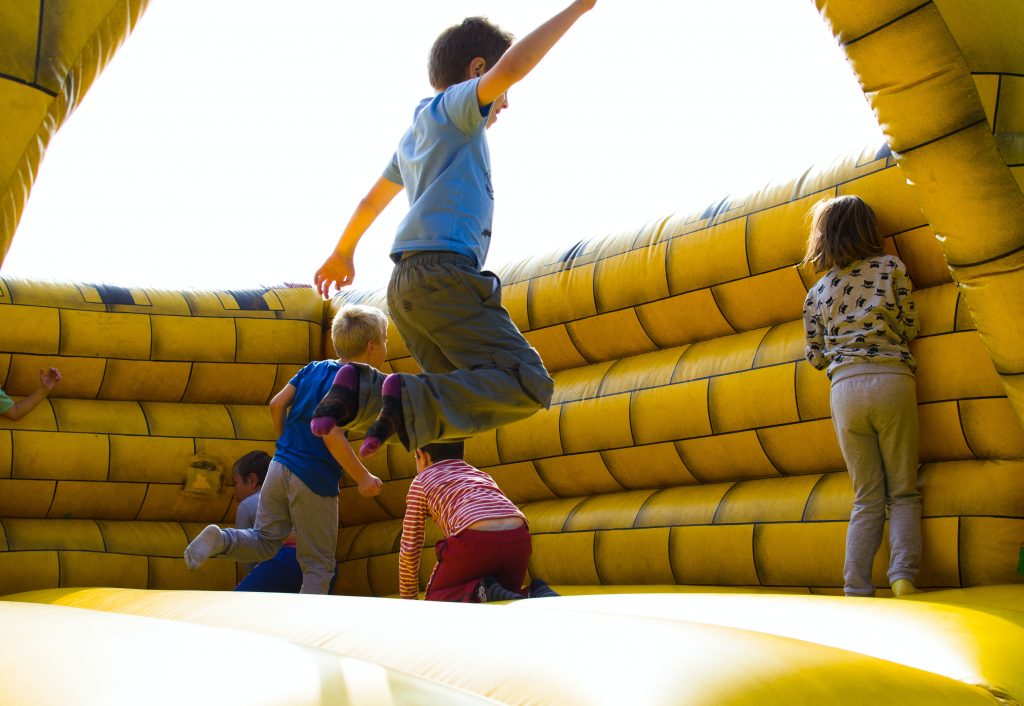Children hurt themselves rather often. This is a simple fact of childhood. Most of the time, it is just a simple booboo. Nonetheless, every responsible parent is perpetually concerned about the safety of their children, making sure that they stay away from the pool, wear their personalized medical alert necklace (if they have a medical condition), don’t touch dangerous chemicals, and stay safe from a myriad of preventable injuries.
Fortunately, there is a lot that parents can do to keep their children safe from unnecessary harm.
Source: wavebreakmedia/Shutterstock.com
Of course, depending on your child’s age, different precautionary measures are needed. Therefore, today, we will explore a variety of safety tips for parents and the different stages of a child’s life.
Let’s get started.
Put Your Baby to Sleep on Their Back
For new parents, it is vital to know that your baby should be put to sleep on its back for the first year. The reason for this is that placing a baby on its back for sleep is one of the ways to prevent sudden infant death syndrome (SIDS).
While the baby will begin to roll over on its own at four to six months, it should still be placed on its back when put down for a nap. Moreover, when the baby does roll over, there is no need to flip them back during their sleep.
Analyze Your Home for Safety Hazards
Viewing your home through the lens of child safety is a vital task for parents to complete. In the average home, there are a variety of potential hazards that can be easily addressed.
First, all furniture should be secured using wall straps, anchors, brackets, braces, and similar devices. This way, if your young child tries to climb onto a piece of furniture while your back is turned, it will remain in place. Additionally, all flat-screen televisions should be mounted to the wall as well.
Next, it is important to ensure that all cleaning products and other sorts of chemicals are either placed out of a child’s reach or locked behind childproof latches placed on cabinets. Similarly, if your home has multiple floors, you will want to gate off both ends of the staircase.
The next thing to childproof is your home’s electrical outlets. Children are often drawn to these and feel compelled to stick anything into them that will fit. Thus, it is critical to cover all outlets with integrated covers that will prevent your child from receiving a dangerous jolt.
Source: The Toidi/Shutterstock.com
Finally, if you have a firearm in your home, safe storage is imperative. Placing your weapon in a closet or in a nightstand is not sufficient and could lead to serious injury or fatality. Thus, any firearms should be out of sight, out of reach of children, and locked in a safe or similar container.
Be Aware of Allergies
Some kids are allergic to a variety of things, and some allergies can be fatal to children. Therefore, it is imperative for you to be vigilant about keeping them away from any dangerous materials, while simultaneously educating them about their allergies.
At the same time, it is important to purchase a medical ID bracelet for any medical condition or dangerous allergies from which your child may suffer.
Source: Celeste Jenkins/Shutterstock.com
However, just because your child has a medical ID bracelet, it doesn’t mean that they will be keen on wearing the jewelry. Therefore, it is up to you as a parent to inspire them to wear their bracelet when necessary.
The easiest way to do this is to lead by example. Therefore, you may want to get an ID bracelet for yourself as well, let your child see you wearing it and show them that wearing it doesn’t bother you. If you don’t have a medical condition, you can still get a non-medical version, purely used for identification purposes.
Have an Emergency Contact List
When your children are a bit older, they might spend some time at home alone, or even babysitting their younger siblings. Alternatively, there might be times when you need to leave your younger children with a babysitter. During such times, it is imperative to have an emergency contact list that is clearly written out or printed and posted somewhere that is easily accessible. This way, if a disaster were to strike, anyone could contact you, other family members, or emergency services.
It is important that your children know where this list is posted and what numbers it contains. Additionally, it is wise to have your youngsters memorize the most important contact information that it houses, such as your cell phone numbers and another nearby family, medical personnel like a family doctor, fire departments, and the like.
Keeping Your Children Safe

While bumps, bruises, scrapes, and scabs are all part of childhood, keeping your children safe from undue harm is an important role for parents to fill.
By utilizing the tips outlined above, you can remove a lot of unnecessary dangers from your child’s life — no matter their age.




